Do-it-yourself design features of flower beds and flower beds of continuous flowering
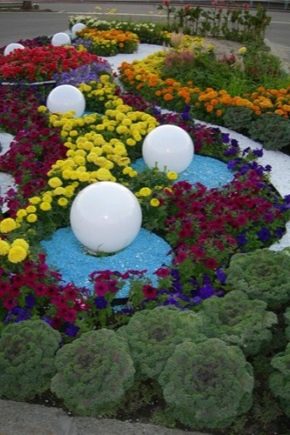
A beautiful backyard area is a source of pride for the owners. In many ways, this is what makes it thoughtful landscaping - an integral part of landscape design. The garden is dominated by trees, shrubs and, of course, flowers. It is these charming, surprisingly harmonious creatures of nature that give us a sea of aesthetic pleasure and positive emotions.
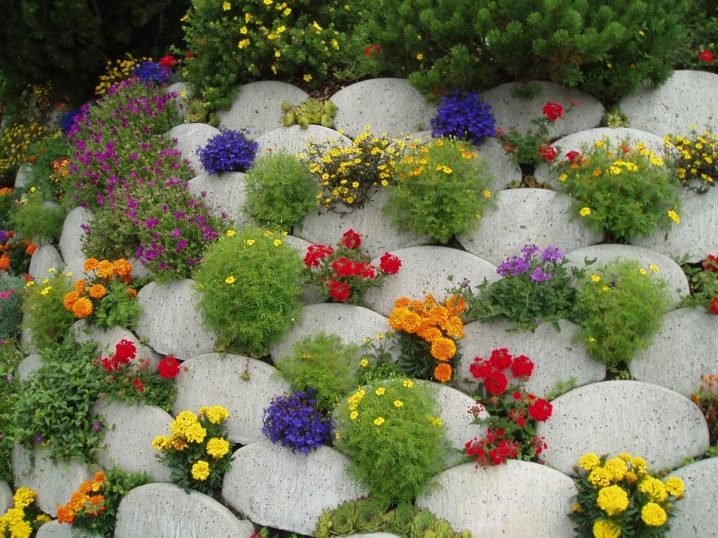
When creating flower arrangements - flower beds and flower beds, it is important not only to think over their shape, size and color scheme, but also to correctly choose green "pets" for planting. Especially if you need to get a highly decorative look from the flower bed and continuous flowering from the beginning of the spring season until the first frosts hit. How to do this will be discussed in our article.

Peculiarities
Organizing an ever-flowering flower bed that will retain its decorative effect regardless of the season is not an easy task.
Planning such a flower garden implies compliance with several conditions at once:
- Allocation of a spacious landing area. The imitation of continuous flowering is based on the constant replacement of some plants with others. A similar result is achieved by combining many crops with different flowering phases. It is impossible to place so many flowers in a limited area.
- Creation of a solid composition with large color spots. Planting single specimens is unacceptable, because the indicated decorative effect is provided by islands of "uniform" flowers. A flower garden with a large area is also needed here. A composition with chaotic flowering of individual plants looks fragmented, introducing an imbalance in the overall design of the garden.
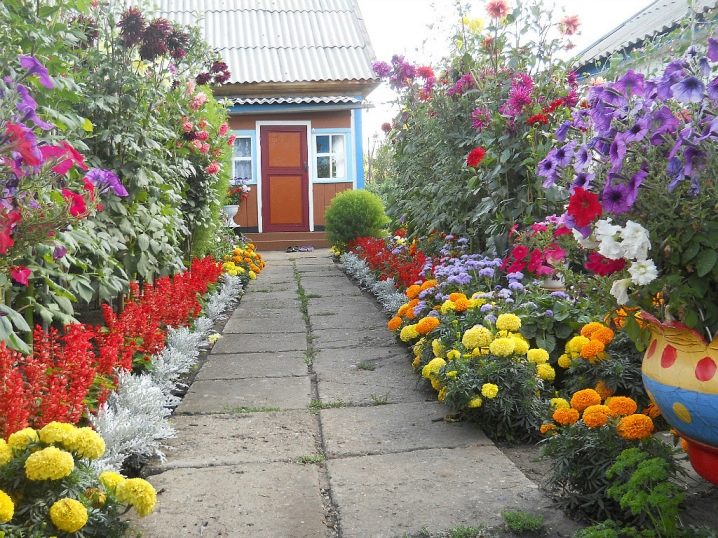
- Formation of large groups of plants according to the principle of similar flowering phases, and not the distribution of crops throughout the flower garden. The explanation for this requirement is still the same: because of the scattered small accents, the flower arrangement ceases to look whole, violating the harmony at the summer cottage. The verified variability of the flower bed is achieved precisely thanks to the alternately soloing seasonal groups.
- Breakdown of an irregular flower garden with a free planting: this is how the club will look as natural as possible. If the design of the backyard area is designed in a strict style, then it is problematic to fulfill this condition. In this case, a more acceptable option would be a breakdown of several flower beds of seasonal flowering, and not the integration of an all-season flower garden into an inappropriate design of the site.
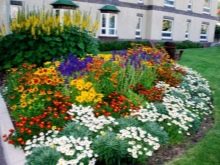
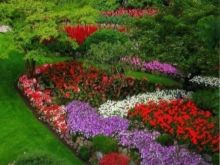
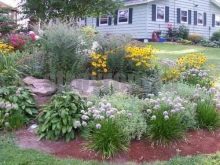
Advantages of continuous flowering perennial plants:
- They are durable. Updating such a flower bed is required every 6-7 years.
- Easy to maintain. Care comes down to spring cleaning, summer watering and weeding.
- Economical. The purchase of perennial plants is a one-time action; annually, you will only need to purchase the bulbs of annual crops.
- Unpretentious in terms of planting sites - perennials will be equally happy with the sunny side of the site, shade and partial shade. Limited access to the sun does not affect their decorative effect.
- Eliminate soil depletion problems.
Laying out an all-season flower bed is a great chance to try yourself as a landscape designer.
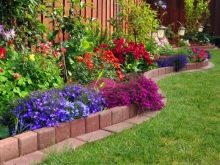
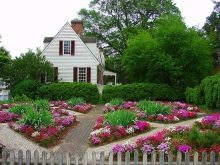
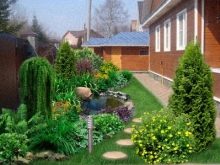
Color classification
Perennial garden crops blooming all summer are stunted, reaching a maximum height of 0.4 m, medium-sized - up to 0.5-0.8 m and tall - more than a meter, which also include various types of climbing plants.
Undersized
They are ideal for decorating curbs or rocky gardens, as when they grow, they densely cover the ground like a multi-colored carpet. The names of low perennial flowers are heard by all gardeners. We are talking about pansies, periwinkles, phlox, saxifrage, cornflowers, milkweed, daisies (chamomiles), alpine asters, large-flowered flax, dwarf asters. Among the ground cover varieties, the Balkan geranium, the seaside armeria and the dwarf lobularia with a height of only 15 cm are especially loved by gardeners.
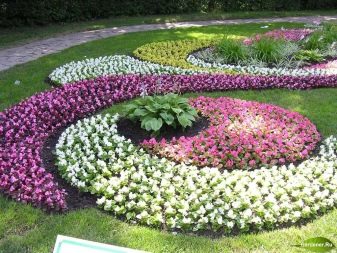
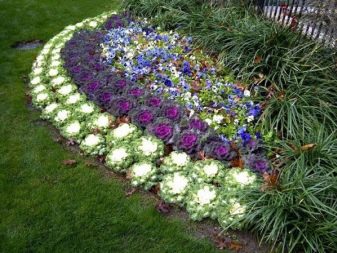
Medium-sized
They are planted both individually and used to fill flower beds and flower beds. With the help of medium-sized crops, it is convenient to form tiered island compositions, classic mono-compositions and create picturesque fences. This group includes daylilies, peonies, roses, yarrows, pink radiola, paniculate phlox, carnations.

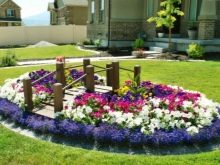

Tall
The creation of chic island flower beds is rarely complete without them. Tall flowers form harmonious combinations with a wide variety of flowers, including short ones. This category includes mallow (stock-roses), basilis, winding sunflowers, rudbeckia, delphiniums, echinacea and many other plants.
For the full development of curly perennials, supports are required, which they picturesquely twine with mustache-vines. Loaches are indispensable for decorating gazebos, terraces, arches, building walls and the formation of hedges.
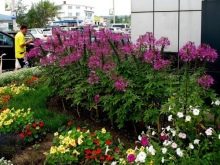
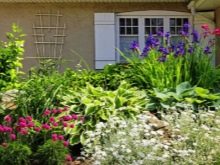
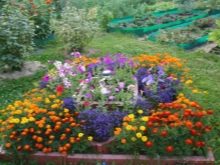
Dwarf annuals
Low-growing species of annuals are characterized by a height of about 30 cm, which allows them to be used as ground cover varieties to effectively fill the gaps between representatives of the Rosaceae family, as an addition to ornamental shrubs or lawn grasses.

The most popular types of stunted annuals are:
- Iberis, nemophiles, night violets, which are used to dilute flower beds.
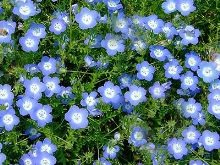
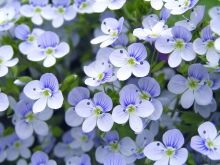
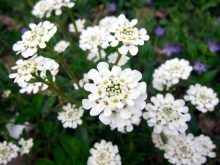
- Ageratum - looks great in rock gardens and rockeries.
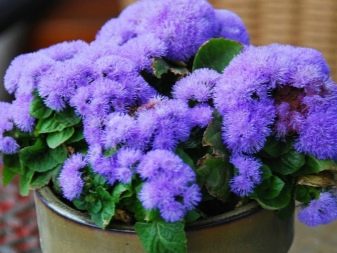
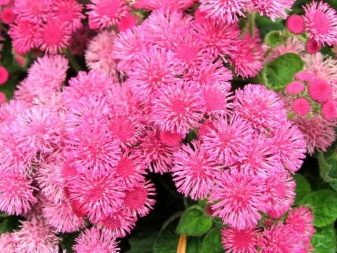
- Daisy - these flowers are used to form borders, curtains, ridges and frame garden paths with them.
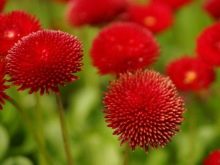
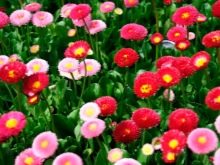
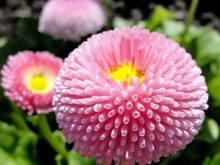
- Dwarf aster and marigolds are generalists that allow you to quickly and at a minimum cost to refine your backyard territory.
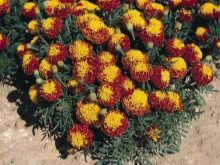
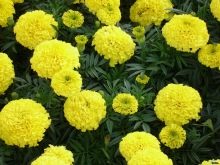
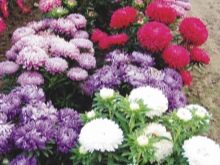
When decorating a flower bed of continuous flowering, one should not neglect decorative deciduous crops and cereals, the main advantage of which is stable decorativeness.
Compared to low-growing trees, ornamental shrubs tend to grow much more intensively, while having a high vitality.

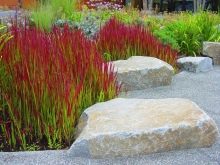
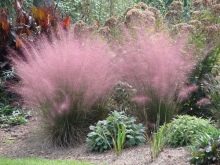
Correct design
Flower beds with continuous flowering are formed from perennials, annuals and biennials. Although, in terms of practicality, it is much more profitable to fill the flowerbed with perennial crops, supplementing them every year with fresh annuals with a long flowering period.
When choosing garden crops, they are guided by:
- A type of flower garden.
- Decorative characteristics - height, shape, color of inflorescences and foliage, flowering time.
- The environmental requirements of the varieties.

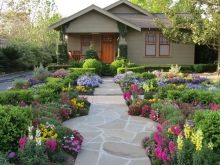
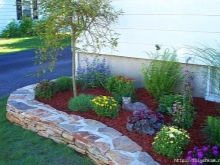
The creation of plant compositions is based on several principles:
- Combine crops that have identical or similar requirements for the composition and condition of the soil, light regime, nutrition and watering schedule.
- Arrange flowers, taking into account the color scheme and combine plants that have contrasting colors or complementary colors.
- Combine plants according to size and development intensity. If cultures are prone to active growth, then measures must be taken to curb their growth.
A mixed bed with continuous flowering is filled with perennials, biennial crops and annuals to achieve the first flowers when the snow begins to melt.
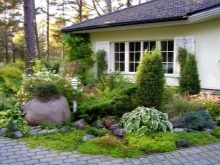


Popular flower crops for the device of mixed all-season flower beds:
- Spring composition. For its creation, preference is given to bulbous crocuses, daffodils, iridodictiums, muscari, chionodox, forest trees. From perennials - erantis, liverworms, marigolds, crested beetles, anemones, brunners, and among biennial crops - viols, daisies, pansies.

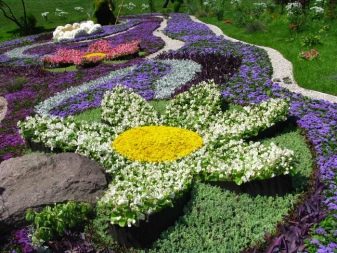
- Summer flower garden. It is most often filled with such perennials as astilbe, phlox, garden geraniums, delphiniums, lupins, cornflowers, loosestrife, lilies, blueheads. Bright annuals - alyssum, lobelia, zinnia, tagetes, lush blooming antirrinum, various varieties of petunias, escholzia. Sunflowers or amaranths are used as spectacular vertical accents. Of biennials, bells, carnations, violets, daisies, foxgloves are interesting. Among the tall ones are stock-roses.
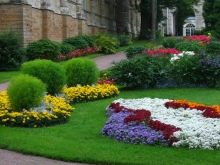
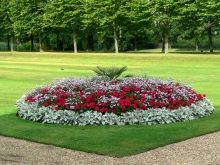
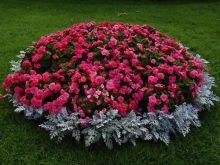
- Autumn flower bed. In order for it to bloom all autumn, preference should be given to one-year or long-term late asters, as well as to the queens of the autumn composition - chrysanthemums. From tall - stonecrop prominent, helenium, crocus. Ornamental cabbage is ideal for creating an original border of the autumn composition. Under the influence of frost, cabbage leaves acquire a brighter contrasting color.
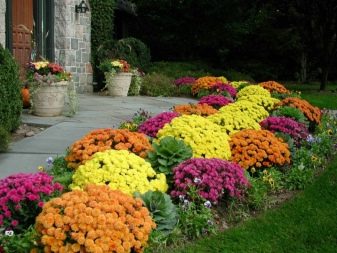

It is possible to plant some perennial plants in a flowerbed of continuous flowering, which are valued by flower growers for their decorativeness and unpretentiousness in care. To make a flower bed of perennials, you need to pick up 6-8 varieties of perennial crops with different bud opening times.
Taking into account that the average duration of flowering of perennials is a month, the flower bed will constantly delight you with the splendor of flowering of one species and one or two still blossoming varieties.
If you supplement them with decorative deciduous plants and perennials with repeated flowering, you get a very picturesque mix. The main thing is to choose plants with a beautiful texture.
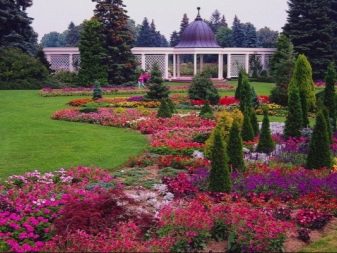
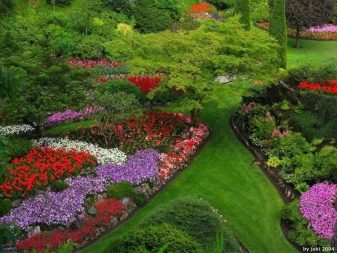
In the first half of May, you can enjoy the splendor of the mauve buds of bergenia, a little later - the multi-colored primroses, and starting from the second half - the brightness of the colors of the iris with white, purple, blue, yellow and aquilegia. In June-July, cornflower, delphinium, daylily bloom.
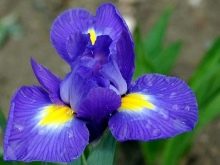

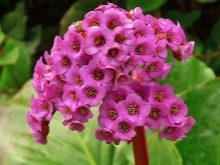
From August, astilbe will begin to solo, easily recognizable by the panicles of inflorescences glowing with all shades of red palette, then various varieties of monard and phlox with a bewitching aroma. The end of the season will be marked by the blooming of goldenrods with a bright yellow color and asters.
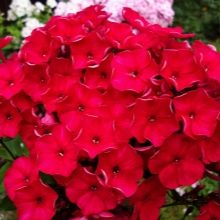
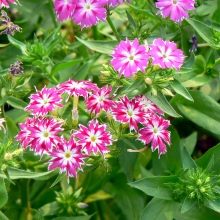
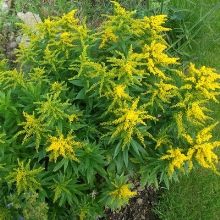
Knowing that making a choice in favor of thermophilic annuals, one can only count on a three-month blooming and fragrant fairy tale. Since most annual plants are native to the subtropics or tropics, it is important to take care of the seedlings in advance. At the end of winter, petunias are planted, at the beginning of spring, seeds are sown for viols, asters, chrysanthemums, dahlias, levkoy, cornflowers, alissum, lobelia, snapdragons, and in the middle of spring they are engaged in marigolds, nasturtium, cosmea.
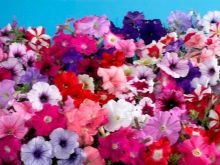
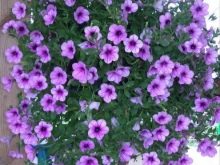
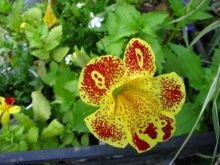
Thus, it becomes possible for the uninterrupted supply of the flower garden with a variety of flowering crops, regardless of their seasonality. For example, the flowering of viols and petunias sown for seedlings in winter can occur both in May and September. Although there are certainly many seasonal plants among annuals.
The standard design scheme for a round flower bed of low-growing flowering annuals:
- In the first weeks of April, the central part of the flower garden is filled with ageratum seedlings: this is how the flower arrangement will turn out with a lush middle.
- White-flowered or red flax, sown for seedlings in April, is used to frame ageratums.
- Flax is surrounded by seedlings of multi-colored dwarf asters, sown in May. They will delight you with flowering until October.
- Decorating the curb with two types of shaving: with lush and small flowers is the most advantageous solution for edging a round flower bed.

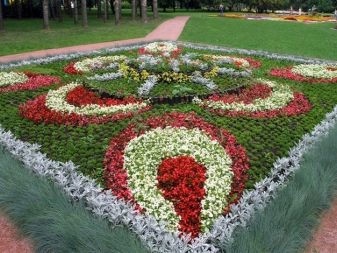
Experienced flower growers agree that combinations of flax, cornflowers and asters are especially sophisticated. The combination of low-growing annuals with perennials allows you to maximize the attractiveness of the flower garden.
How to plant?
Even those who have just begun to comprehend the basics of the art of landscape design can organize a flower garden or a flower bed with their own hands in the country, if they take the matter with full responsibility. At the initial stage, garden crops are selected by the time of planting and thus a list is formed, which includes spring, summer, autumn varieties.
A competent arrangement of a flower garden also implies the determination and study of a place for planting: you need to analyze the soil, illumination in individual parts of the flower bed and find out if there is a slope. This is necessary for the correct placement of crops, taking into account the requirements of green pets to light and humidity conditions, composition and condition of the soil.
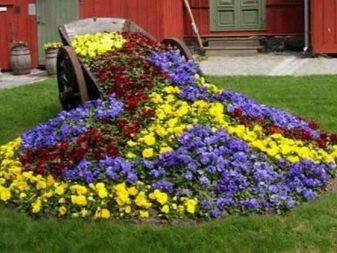
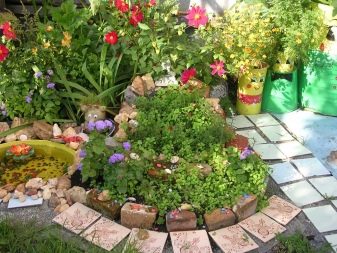
To avoid mistakes when disembarking, a diagram is drawn in advance with the compositional arrangement of selected plants in certain places according to the previously indicated criteria:
- Requirements for agricultural technology. The plan should have a clear distribution of shady, shaded and well-lit areas for planting.
- Decorativeness: some crops will form the constructive basis of the flower garden, others - conifers, deciduous shrubs and perennials, act as a spectacular frame for blooming neighbors.
- The size. If the club is adjacent to fences or a house, then large plants are planted in the background, and medium-sized varieties and miniature ground cover are given space in the first rows. When a flower garden (round, oval) is placed in the middle of the home territory, then its center can be decorated with tall plants. Narrow-leaved flowers and grasses alternate with broad-leaved ones.
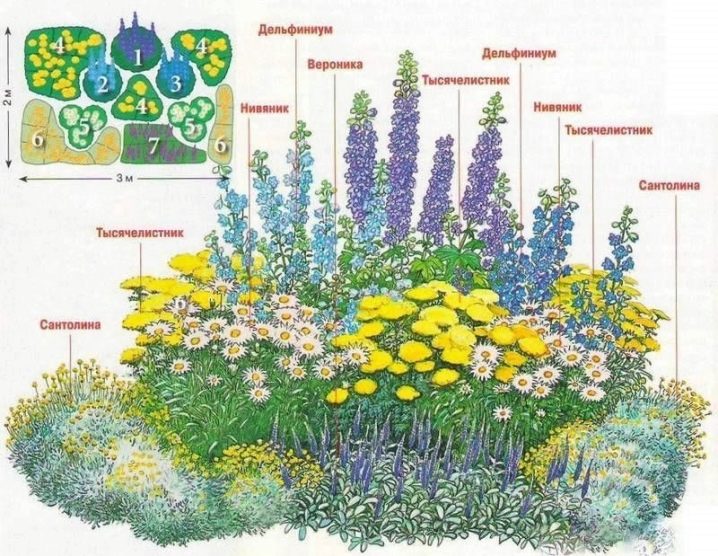
- Flowering seasonality. In this case, it is convenient to navigate according to the flowering and flowering schedule of summer, spring, autumn plants selected for planting. Each time interval should correspond to flowering periods of at least 3-4 flowers.
- Coloring. When choosing a coloristic solution, flower beds are guided by personal preferences, while not forgetting about the general rules of combinatorial colors - either as a supplement or for contrast.
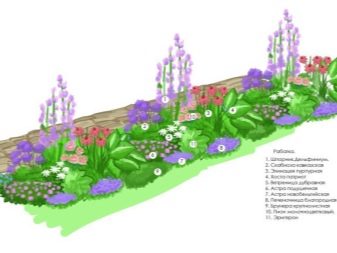

The last stage is the preparation of the soil for planting: the introduction of fertilizer mixtures and baking powder - expanded clay, crushed brick, river sand. The growth of actively growing varieties is limited with the help of plastic fences, deepened into the ground next to the landing site of aggressive green pets.
And in the next video, you can familiarize yourself with the main mistakes when designing flower beds.
Care
The fact that for the full growth and development of any plantings in a summer cottage, complex care is required, implying systematic weeding, irrigation, feeding, loosening, is well known to any grower. For continuous flowering flower beds, the same generally known rules apply and additional techniques are applied to maintain their attractiveness.
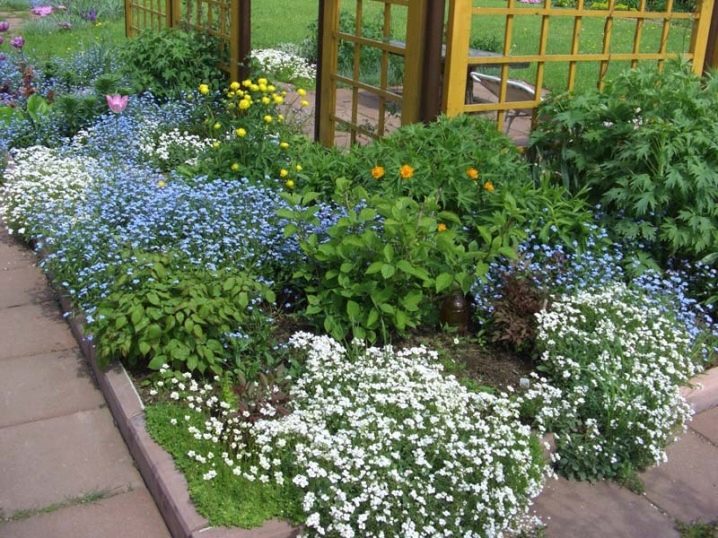
What do we have to do:
- Remove dead buds to prolong flowering.
- Pinching the tops - this stimulates the regrowth of flowers and activates the lateral shoots.
- Plant annual plants in time to fill the bald spots formed by faded crops. It is convenient to decorate voids with portable flowerpots planted with one-year-olds.
- Do not forget to thin out, prune and divide flowers, thereby preventing the displacement of weak plants by stronger competitors.
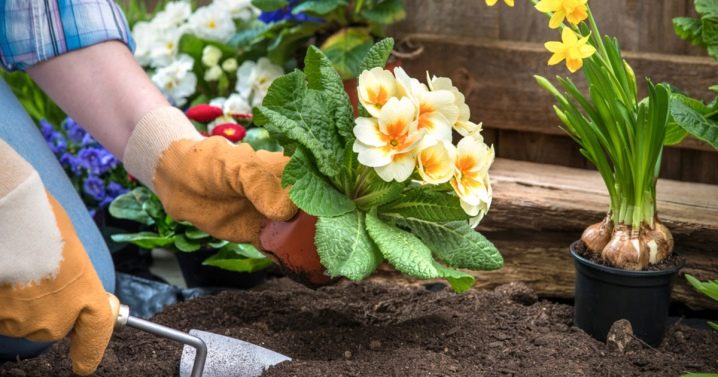
Beautiful examples of landscape design
- Beds and flower beds of continuous flowering are able not only to decorate the backyard territory, but also to give it a bright personality.
- Monochrome flower beds are a clear proof that their creator has perfectly mastered the art of controlling the kaleidoscope of colors created by the beautiful representatives of the flora kingdom.
- Orange-yellow flower gardens will give a sunny mood regardless of the weather thanks to crocuses, daffodils, tulips of the appropriate shade, calendula, lilies, evening primrose, helenium, marigolds, nasturtiums.
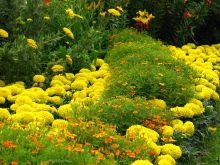
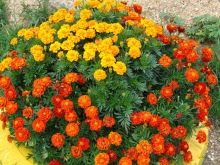
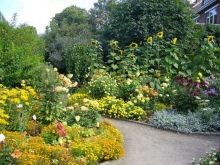
- Flowerbeds filled with kandyk, crocuses, juno, delphinium, monarda, cornflowers, phlox of pink, blue and purple shades look unusually fresh and romantic.
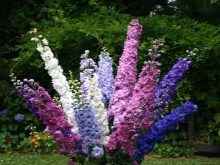
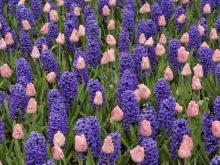

- Laconic white flower beds of daffodils, lilies, cornflower, pearl mussel, mallow, lavater, phlox, lily of the valley, echinacea of snow-white colors give the garden a delicate, airy look.
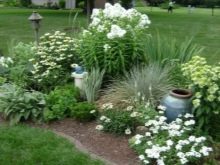
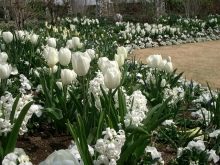

- The current trend of recent decades is flower beds in blue. In this case, flower growers turn to forget-me-nots, liverwort, scilla, carpet navel, brunner, mouse hyacinth for help.
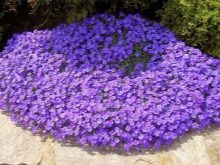
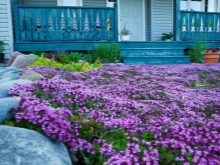

- Ground cover varieties allow not only creating stunning beauty carpet beds, but also arranging thematic flower beds. Thanks to the bright dwarf flowers, a luxurious blooming butterfly can appear on the site.
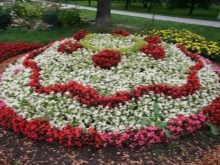
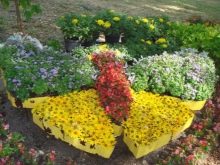
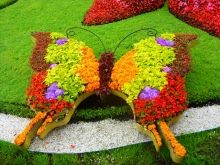
- The result of using foreign objects in decorating a summer cottage is always interesting: a garden wheelbarrow, worn tires, rotten trunks as designer flower pots, stones for an alpine slide and decorative figures.
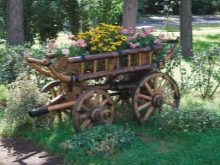









































































































The comment was sent successfully.